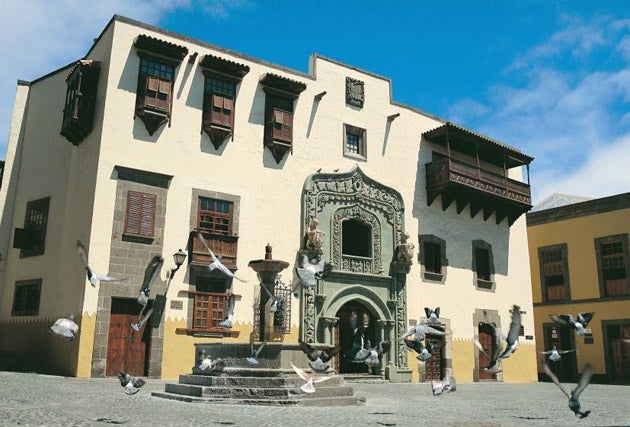Island treasures: The Canary Island's best maritime museums

Your support helps us to tell the story
From reproductive rights to climate change to Big Tech, The Independent is on the ground when the story is developing. Whether it's investigating the financials of Elon Musk's pro-Trump PAC or producing our latest documentary, 'The A Word', which shines a light on the American women fighting for reproductive rights, we know how important it is to parse out the facts from the messaging.
At such a critical moment in US history, we need reporters on the ground. Your donation allows us to keep sending journalists to speak to both sides of the story.
The Independent is trusted by Americans across the entire political spectrum. And unlike many other quality news outlets, we choose not to lock Americans out of our reporting and analysis with paywalls. We believe quality journalism should be available to everyone, paid for by those who can afford it.
Your support makes all the difference.The Canaries have featured in some of the world's great voyages, so it is fitting that they boast some excellent repositories of the stories of the sea.
The biggest historical museum in the Canary Islands, Gran Canaria's Casa de Colón (00 34 928 312373; casadecolon.com ; open Mon-Fri 9am-7pm, Sat-Sun 9am-3pm; admission free) is also one of its most attractive. Devoted to Christopher Columbus and his role in making the Canaries a gateway to the New World, it's housed in a gorgeous 15th-century mansion in the heart of Las Palmas. Tradition has it that Columbus himself stayed here in 1492, before continuing his great voyage of discovery. Among fascinating collections of maps and navigational instruments is a recreation of the interior of La Niña, one of Columbus's fleet. There's also a room full of priceless pre-Columbian artefacts.
There's another celebration of Columbus's connection with the Canaries in Santa Cruz de la Palma: an outdoor replica of one of his ships, the Santa Maria. Locals call it the Barco de la Virgen (open Mon-Thu 9.30am-2pm and 4pm-7pm, Fri 9.30am-2pm; admission free) and use it as a stage for traditional dances during the island's patronal fiesta, the Bajada de la Virgen, held once every five years. Inside is La Palma's Museo Naval, a small collection of seafaring ephemera.
More recent maritime history is documented at the Museo Naval de Canarias (00 34 928 443155; armada.mde.es ; open Mon-Fri 10am-1pm; admission free) in Las Palmas de Gran Canaria. Located in the islands' main naval base, it gives pride of place to a fine hoard of Second World War weapons including guns, grenades and a torpedo.
The latest addition to Fuerteventura's clutch of ethnographic museums is the Museo de la Pesca Tradicional (00 34 928 866235; open Tue-Sat 10am-6pm; admission free), in El Cotillo lighthouse on the north-west coast. It delves into the island's ocean-going fishing traditions and is stuffed with nets, weights and interesting photos.
Lanzarote's capital, Arrecife, boasts two striking remnants of the age of pirates and adventurers. Just offshore, but connected to the city centre by a causeway with an unusual drawbridge, is the stocky little Castillo de San Gabriel, built to defend the city against 16th-century marauders. There are plans to open a maritime museum here. Arrecife's second fort, Castillo de San José, houses Lanzarote's contemporary art museum, MIAC (00 34 928 812321; centrosturisticos.com ; open 11am-9pm; €2.50). Its restaurant, designed by César Manrique, is one of the best in town.
Join our commenting forum
Join thought-provoking conversations, follow other Independent readers and see their replies
Comments